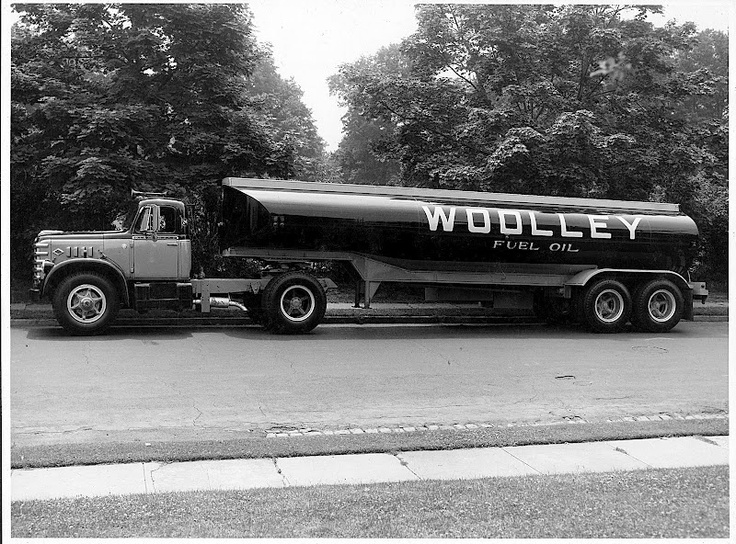Do You Schedule Your Deliveries or Do They Schedule You?
Written on: May 3, 2019 by Phillip J. Baratz
Over the past few years, as Angus Energy has expanded its legacy hedging-based business into the broader approach of What can we do to help our clients run more efficient and profitable businesses, the company has spent a lot of time focusing on business intelligence and remote monitoring offerings. The base premise is the more you know about every aspect of your business, the fewer surprises you will have and the better positioned you would be to use that information to make better decisions.
If you look at the expense pie that consists of customer acquisition costs, selling, general and administrative expenses (SG&A) and delivery costs, the biggest expense for any fuel oil retailer is the cost to make deliveries. It requires many vehicles—most of which sit idly for most of the calendar year.
It requires one of the hardest-to-acquire commodities (truck drivers), especially those who are not actually driving for the full year. It also requires a lot of fuel, fleet maintenance, unscheduled repairs, insurance premiums, tire replacements, dispatchers, on-board computers, routing expertise, etc. Although this is widely known, the industry hasn’t done much to make deliveries more efficient over the past few decades, but that is starting to change.

Remote monitoring and routing software help to create the most optimized schedule for your drivers.
Remote monitoring/routing software
The importance of remote monitoring and routing software cannot be overstated. The only thing that might be worse for an oil dealer than a money-losing 40 gallon delivery into a 275 gallon tank is allowing that tank to run out of oil. Just be thankful that you don’t have hundreds of “0 gallon deliveries” like many propane dealers have!
Remote monitoring should go a long way towards eliminating deliveries that are either too small or too large. However, I want to focus on another part of the delivery, dispatch and routing triumvirate: when deliveries are scheduled in the first place (not the size of the delivery).
As it stands right now, you have a good deal of specific information on your customers that assist you in planning when to make your next delivery (in this case, we are referring to auto-delivery customers, not to “will-call”). Each customer’s tank has a tank size, a K-factor, an optimal delivery and a “reserve” (the latter two being the inverse of one another). The math—using either K-factor or tank monitors—is actually pretty simple. If you determine the amount of fuel in the tank, and you project consumption over the next week to 10 days, you should be able to accurately predict when the tank will have room in it for optimal delivery.
So, (intentionally simplistic), each day we look at the sum total of all of the tanks that have room for an optimal delivery (or a different size delivery if you are “pulling ahead of heating degree days [HDDs]”). Once we add up all the “needed” deliveries, we figure out how many trucks and drivers are required to make those needed deliveries, given constraints such as truck capacity, available drivers, rack locations, driver hours and overtime, etc. Basically, we divide the total deliveries needed by the number of deliveries normally made by a truck, and we arrive at our truck and driver scheduling.
Predictable outcomes
This tried and true practice leads to some very predictable outcomes, some of which Angus believes should be challenged:
• Since consumption follows the Heat Curve, deliveries also match that same curve.
• Reserves are generally set by tank size not by customer K-factor.
• Reserve levels are rarely considered or changed, leading to the same size delivery in January as in July, despite the fact that the reserve factors are much higher consumption in January (fewer days till a run out).
• The percentage of deliveries with very high K-factors is pretty much the same regardless of the season.
• The attitude of being conservative with delivery sizes tends to get worse each time there is a run out (this one makes perfect sense).
The one outcome that is most frustrating to us is the fact that, based on a study of over 400,000 customers, about 15% of all deliveries in the month of January are to customers with K-factors that are over 10! In a normal January in the Northeast, this group of customers would consume fewer than 100 gallons for the entire month, yet 15% of the stops are to fill up their tanks. In addition, why is their reserve the same size as a customer with a K of five? If January is your busiest month, why not fill the high-K’s before January and then not deliver to those customers for the entire month?
Optimized scheduling
That was a very basic example of “scheduling optimization” but one worth thinking about as we move towards trying to manage delivery expenses without adding to the risk of run outs. In our world, we are always “peeking into the tank” to see if there is room for a delivery. However, by looking only at the next delivery, we end up losing the forest for the trees. We can’t optimize a year if we aren’t looking ahead at the entire year.
The scheduling model for the future uses every bit of data you have, and still works hand-in-hand with your back-office accounting system. However, it also includes a formulaic approach to manage the expense side of the ledger. If you can shift around some deliveries over the course of the year, and structure them so that a few trucks are not needed during the peak season—all without increasing run-outs—how would that impact your bottom line? The future, which is not that far away, will have you managing the scheduling process proactively, not just waiting for the tank to say, Okay, I am ready for a delivery.
Combining the power of scheduling optimization, with routing expertise and remote monitoring puts the notion of efficiency maximization back into your hands. ICM

There is more technology at our fingertips than decades before, making it easier to calculate and predict customer needs.

